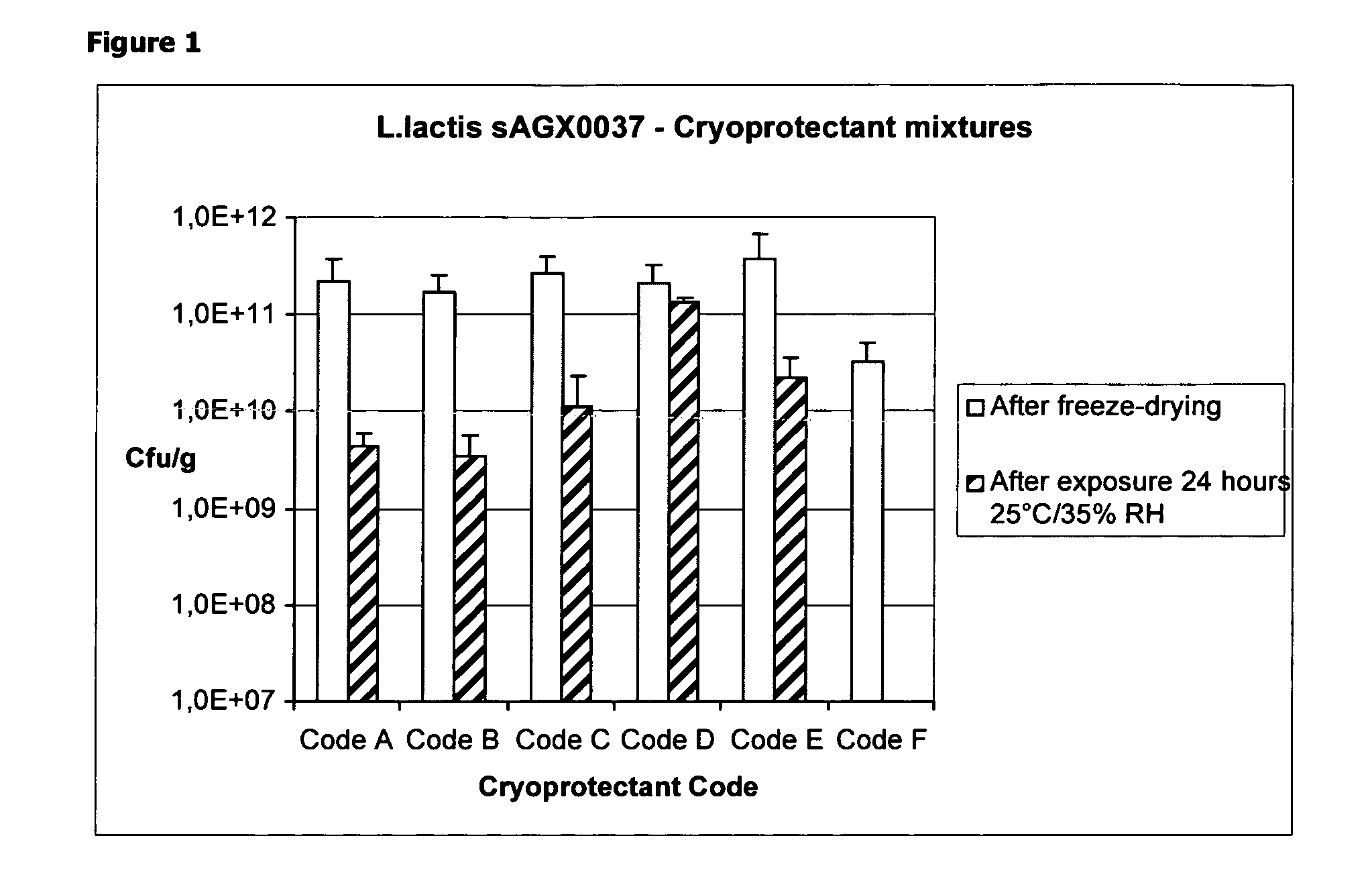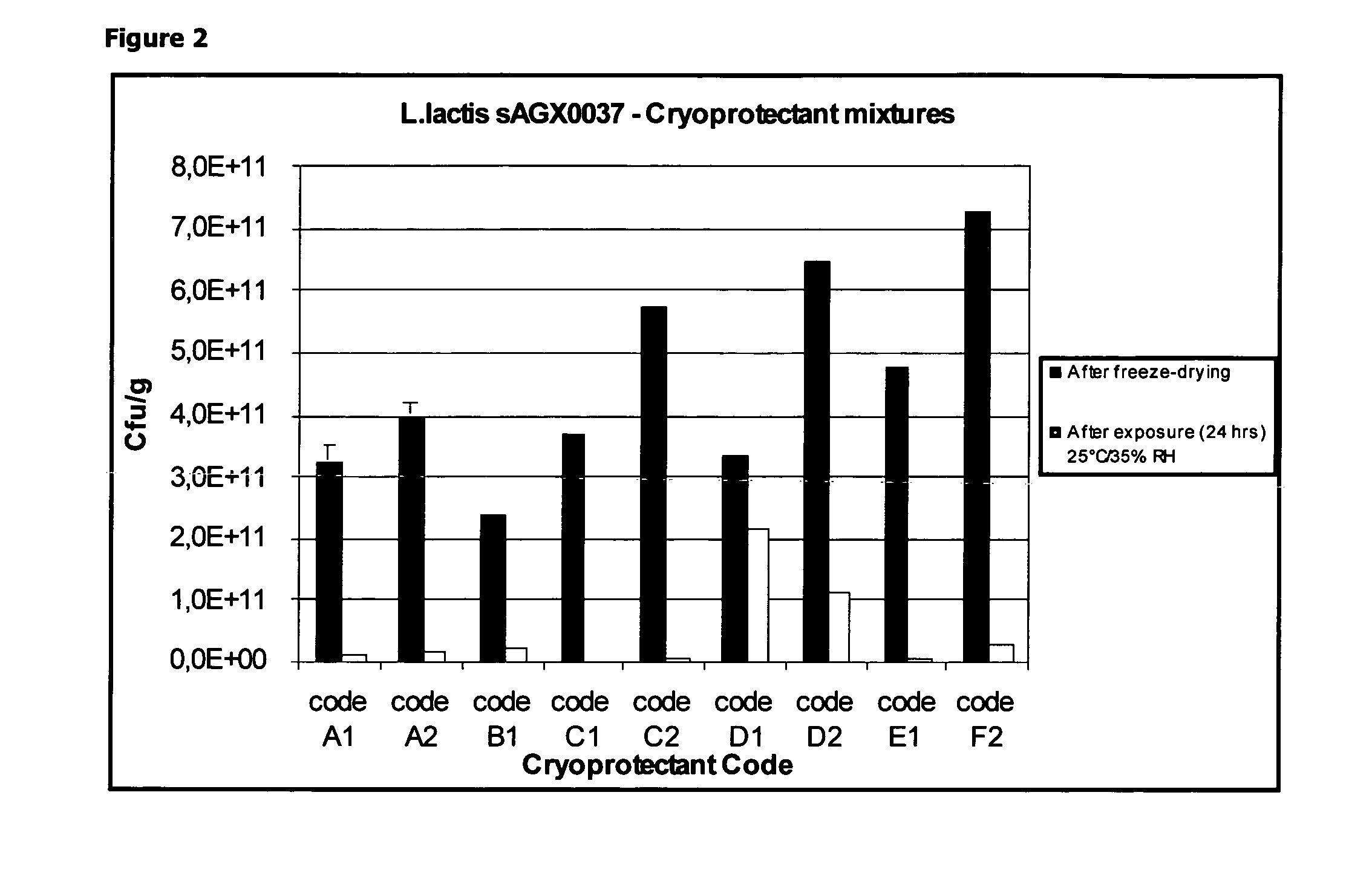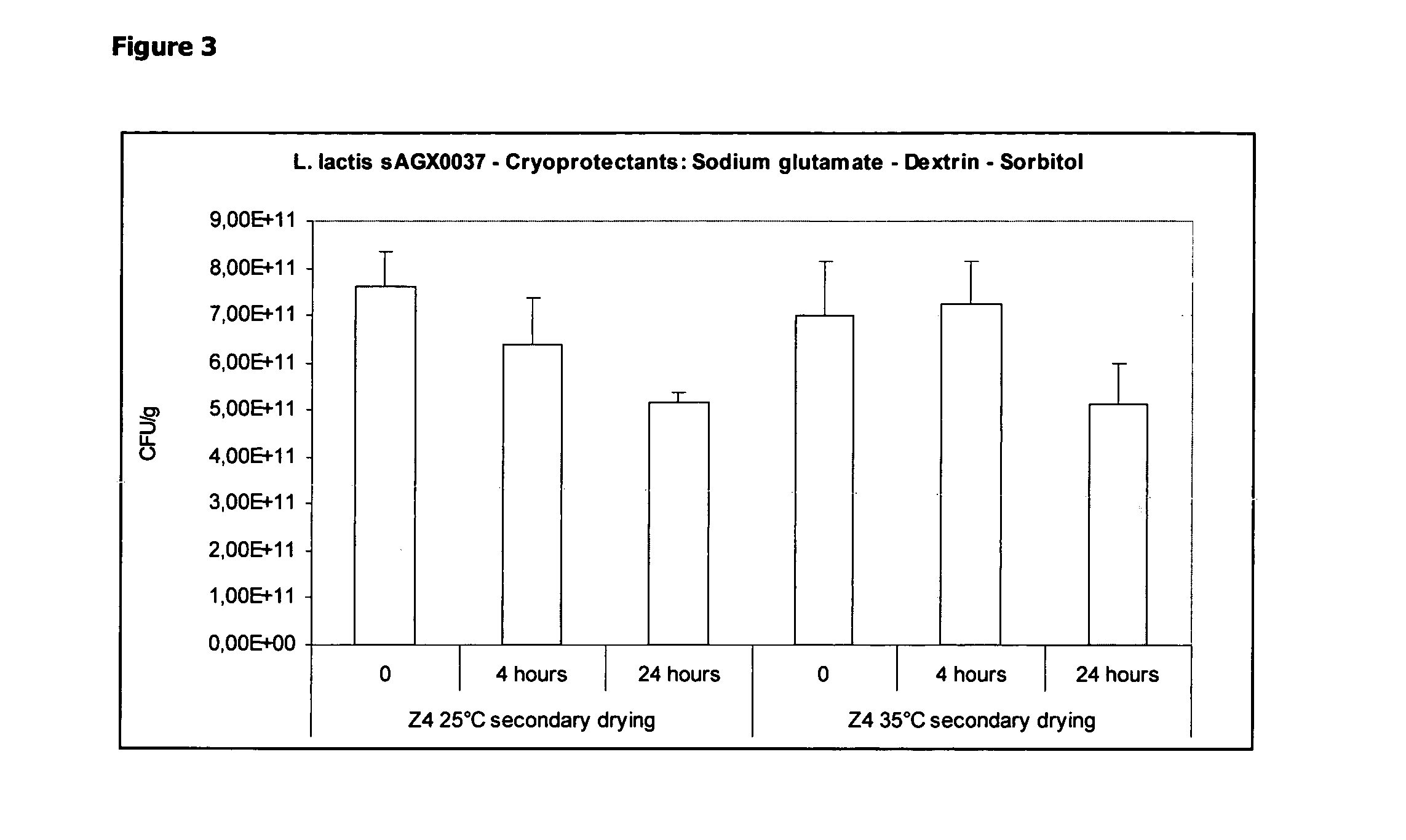Cryoprotectants for freeze drying of lactic acid bacteria
a technology cryoprotectants, which is applied in the field of freezing drying of lactic acid bacteria, can solve the problems of imposing significant stress on the bacteria, affecting the survival rate of bacteria, and causing rapid death
- Summary
- Abstract
- Description
- Claims
- Application Information
AI Technical Summary
Benefits of technology
Problems solved by technology
Method used
Image
Examples
example 1
Stabilizing Effect of a Combination of Dextrane, Sodium Glutamate and a Polyol During Freeze-Drying and Unprotected Short-Term (24 Hours) Exposure to 25° C. / 35% RH
[0089]L. Lactis strain sAGX0037 was grown in a 5 L fermentor, washed twice with purified water that contained 800 μM thymidine, and concentrated tenfold. The concentrated bacteria were mixed in a 1:1 volume ratio with the cryoprotectant mixture (1 ml sample+1 ml cryoprotectant). The resulting formulation was aliquotted to 35 vials in 2 ml volumes. The entire process, from the bioreactor to the vial, took approximately 8 hours, while the temperature was averaging 10° C. The various formulations in their final concentration, i.e. including bacteria, are shown in Table 1. The vials were frozen in solid CO2 pellets until these were placed in the freeze-dryer.
TABLE 1Composition of the cryoprotectant formulations afteradding the cell suspension. The dry weight content of thecells in the formulated cell suspension was 33 g / L or 3...
example 2
Stabilizing Effect of a Combination of Dextrane, Sodium Glutamate and a Polyol During Freeze-Drying and Short-Term (24 Hours) Exposure to 25° C. / 35% RH
[0095]A pre-culture (100 ml) of L. lactis strain sAGX0037 was used for the inoculation of a 7 L Continuously Stirred Tank Reactor (CSTR), containing 5 L of M17c medium (composition listed in Table 2)
TABLE 2Composition of M17c fermentation mediumComponentQuantity (for 1 litre)Yeast extract20gKH2PO42.0gMgSO4, 7H2O0.51gCitric acid monohydrate0.49gGlucose55gThymidine (100 mM)8ml / L
[0096]The bioreactor was set to maintain temperature at 30° C. and pH to 7 (by addition of 5M NH4OH). The agitation speed was set at 200 rpm. The fermentation was terminated when the glucose consumption was completed by cooling the fermentor to 4° C. An ‘end of fermentation’ sample was taken and used for dry cell weight (DCW) determination. Once the fermentation was terminated, 3.5 L of the fermentation broth was concentrated and washed by ultrafiltration / diafilt...
example 3
Stabilizing Effect of a Combination of Dextrane, Sodium Glutamate and Sorbitol During Freeze-Drying and Unprotected Short-Term (4 and 24 Hours) Exposure to 25° C. / 35% RH
[0104]A pre-culture of L. lactis strain sAGX0037 (100 ml) was used for inoculation of a 7 L CSTR containing 5 L of M17c medium (see Table 2 above). The bioreactor was set to maintain temperature at 30° C. and pH to 7 (by addition of 5M NH4OH). The agitation speed was set to 200 rpm. The fermentation was terminated when the glucose concentration had dropped below 0.5 g / L, by cooling the fermentor to 4° C. An ‘end of fermentation’ sample was taken and used for DCW determination. Once the fermentation was terminated, 3.5 L of the fermentation broth was concentrated and washed by ultrafiltration / diafiltration using a 1400 cm2 500 kDa hollow fibre filter.
[0105]When the total amount of 3.5 L broth was concentrated approximately 10-fold, the 5 L bulk bottle was replaced with a bottle containing purified water, and used for ...
PUM
| Property | Measurement | Unit |
|---|---|---|
| Fraction | aaaaa | aaaaa |
| Fraction | aaaaa | aaaaa |
| Time | aaaaa | aaaaa |
Abstract
Description
Claims
Application Information
 Login to View More
Login to View More - R&D
- Intellectual Property
- Life Sciences
- Materials
- Tech Scout
- Unparalleled Data Quality
- Higher Quality Content
- 60% Fewer Hallucinations
Browse by: Latest US Patents, China's latest patents, Technical Efficacy Thesaurus, Application Domain, Technology Topic, Popular Technical Reports.
© 2025 PatSnap. All rights reserved.Legal|Privacy policy|Modern Slavery Act Transparency Statement|Sitemap|About US| Contact US: help@patsnap.com



